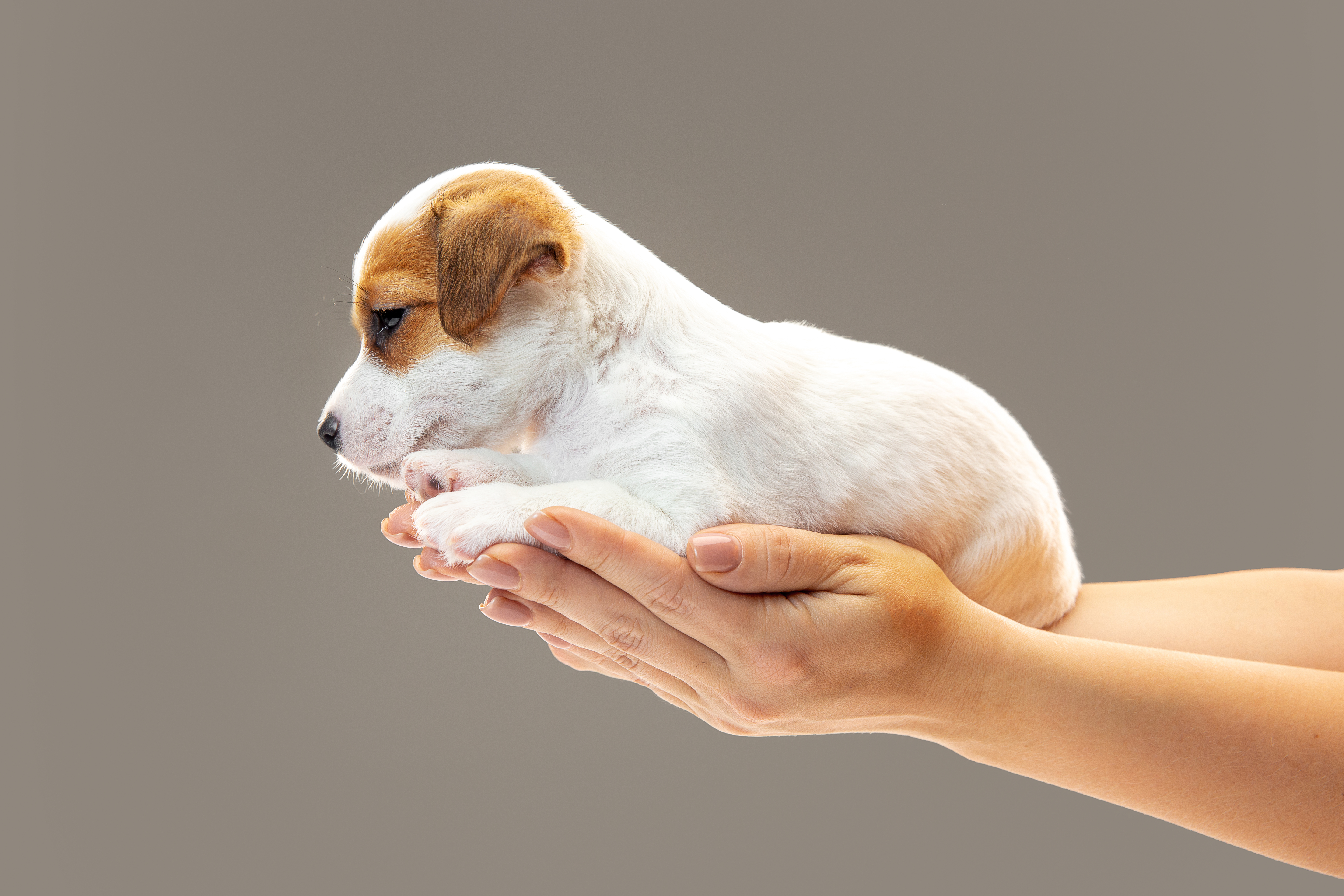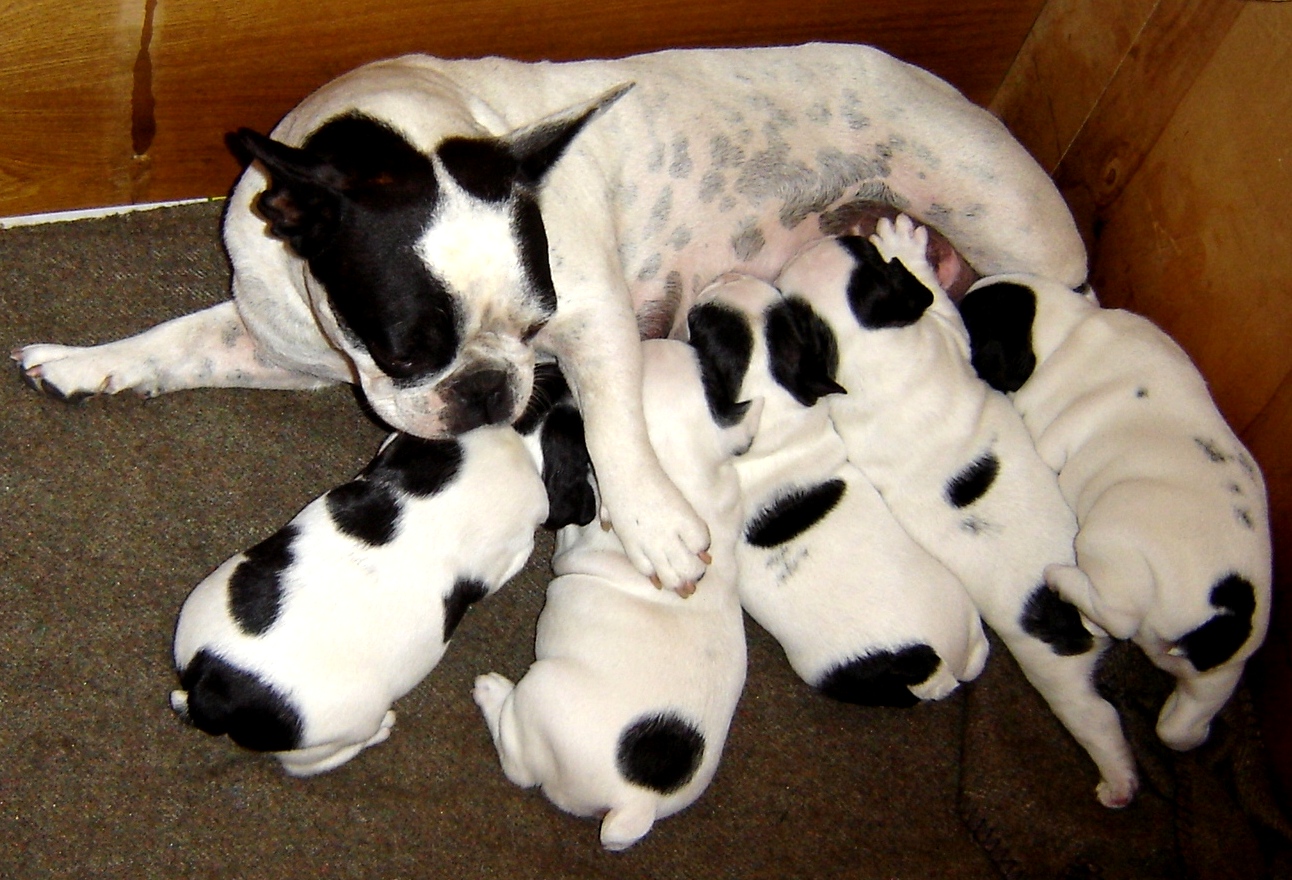Many new pet owners are clueless about caring for the mother dog and her pups after it has recently given birth.
Postpartum, also known as post-natal, is when a dog has recently given birth or immediately after whelping and is often marked by difficult times for the mother dog.
Postpartum care includes providing immediate care to the mother dog until she recovers, assessing infections and milk production, increasing the number of quality meals, and weaning infant pups.

Most mother dogs are prone to infections and fever immediately after birthing, making them and their pups vulnerable to sickness.
Therefore, you must be prepared to understand every bit of postpartum dog care and treating common illnesses.
Read on to learn more about caring for a mother dog.
Postpartum or Post-Natal Stage
The postpartum or post-natal stage is the stage after the mother dog has birthed her offspring.
Like humans, mother dogs are equally sensitive and weak after giving birth, requiring immediate care, diet change, and medical need whenever possible.
Read more about taking care of a mother dog during pregnancy.
Most canines are delicate afterward, but you can take precautions to ensure that the mother dog and her pups stay healthy.

Postpartum care can be divided into three significant sections.
- Providing Immediate Care
- Monitoring Her Health
- Providing Regular Care
Let us delve into these points in detail.
1. Providing Immediate Care
Upon birthing, you should provide intense care for the first few days.
Providing immediate care often includes giving her what she needs, cleaning her up, providing vet care, and ensuring she is eating enough quality food.
Here are the steps to providing immediate care.
Step 1: Set Up an Ideal Place
Start with making a safe place for the mother dog and her pups to rest inside or outside your home.
Moving her away from human and animal encroachment may be essential because mother dogs are often protective.
Provide her with a kennel or a box with clean bedding.

Step 2: Clean Her Up
Before moving your dog, care to wash them up and clean up any discharge or fluids that may lead to infection.
Cleaning the mother dog after birthing helps ward off the infection risk.
Step 3: Supply Plenty of Fresh Water
Supply plenty of fresh water to keep her from being dehydrated.
Providing water helps her recover and to start producing milk.
Step 4: Take Her to the Vet
It's a good idea to take her to the vet to assess whether she has any medical condition or needs additional medical care.
Step 5: Provide Enough Quality Food
Mother dogs need to eat often. Provide her with enough nutrient-rich food to help produce milk.
Try a food designed for nursing dogs, as that will provide the high-quality nutrients she needs.

2. Monitor Her and Pup's Health
It would help if you started by monitoring her and the pup's health status to determine whether they have developed certain health conditions.
Here are the steps to monitoring her and her pup's health.
1. Check for Drainage
You can expect normal discharge from the vaginal area for weeks after delivery.
The average discharge could last for some weeks and progressively diminish as time goes on.
You need not worry about the discharge until it is brownish, greenish/blackish, or even red and does not smell strong.
However, any pale or gray discharge with a thick texture and a nasty odor may indicate infection.
Check with your vet immediately to find a reliable solution.
2. Check her Teats
The teats would become inflamed, which take 6-10 weeks to shrink back; some may take as much as twelve months or more.
Another cause of concern is a bacterial infection in the teats or mastitis.
The trauma to the nipple or teat canal allows bacteria to enter the breast, leading to infection.

The infected mammary gland will become increasingly swollen, inflamed, discolored, and painful as it progresses.
Take them to the vet if you notice swelling with redness and irritation of teats with yellow, green, or red milk discharge.
3. Look for Signs of Low Calcium
Check for a drop in the level of calcium as the dog's body fails to pull enough calcium from the bones to keep up with the milk demand.
Eclampsia, also referred to as hypocalcemia or puerperal tetany, is an emergency medical condition associated with a drop in blood calcium levels in nursing mothers.
It mainly occurs when the mother dog actively produces milk for infant pups.
Some common signs may include loss of interest in her puppies, disorientation, nervousness, panting rapidly, whining, etc.
Visit a vet before the situation gets out of hand.
4. Expect Some Panting
A nursing mother would often pant after giving birth due to tiredness and recovery from pain.
You need not worry if your dog is occasionally panting; however, panting all the time can be a cause for concern.
Consult with your vet to diagnose the problem.
5. Diarrhea is Common
A nursing mother dog may develop diarrhea after giving birth, usually because she eats the placenta.
Sometimes, the stress may also contribute to runny stool.
Focusing on the diet, providing regular water, and a pure pumpkin puree may help.
She may also refrain from eating. Wait until she approaches her food; otherwise, consult the vet.
3. Providing Regular Care
Following the delivery of healthy babies, you should provide regular care to the mother dog to ensure she recovers sooner.
- Feed her several quality meals a day. Increase her food intake weeks before the delivery and continue the same for the week following birth.
- Veterinarians advise feeding puppy food to the dog for its higher caloric value. Gradually introduce it to your dog's regular food.
- Include special treats and supplements, such as cottage cheese, eggs, liver, and nutrient-packed delicacies with her meal.
- Ensure she has access to fresh water a couple of times a day.
- Ensure the mother dog is attentive to her new pups and that they get timely milk.
- Provided a clean and safe place for her to nurse her pups and changed the bedding often.
- Keep the whelping box warm, around 85 degrees Fahrenheit.
- Regularly clip the puppies' nails to prevent them from scratching the mother's teats.
- Assist with the weaning process by introducing solid food three weeks after birth.
- The texture of the food should go from soup to Cream-of-Wheat to oatmeal within about a week.
- Puppies should be weaned entirely by week 8.
- Provide interactive play items and game time to keep the pups engaged, learn skills, and become aware of the surroundings.

Conclusion
Being a new mother is crucial for all female dogs; however, she is less likely to care for herself during and after pregnancy.
As a caring pet owner, you should assist with her delivery and help her quickly recover by providing immediate and regular care.
Always get in touch with your veterinarian in Urbandale to find out how to best care for a new mother dog.